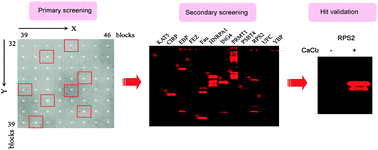Discovery of peptidylarginine deiminase-4 substrates by protein array: antagonistic citrullination and methylation of human ribosomal protein S2†
Abstract

* Corresponding authors
a
Division of Medicinal Chemistry, College of Pharmacy, University of Texas, Austin, TX 78712, USA
E-mail:
waltfast@mail.utexas.edu
Fax: +1 512 232 2606
Tel: +1 512 232 4000
b Science Park-Research Division, The University of Texas M.D. Anderson Cancer Center, Smithville, TX 78957, USA

 Please wait while we load your content...
Something went wrong. Try again?
Please wait while we load your content...
Something went wrong. Try again?
Q. Guo, M. T. Bedford and W. Fast, Mol. BioSyst., 2011, 7, 2286 DOI: 10.1039/C1MB05089C
To request permission to reproduce material from this article, please go to the Copyright Clearance Center request page.
If you are an author contributing to an RSC publication, you do not need to request permission provided correct acknowledgement is given.
If you are the author of this article, you do not need to request permission to reproduce figures and diagrams provided correct acknowledgement is given. If you want to reproduce the whole article in a third-party publication (excluding your thesis/dissertation for which permission is not required) please go to the Copyright Clearance Center request page.
Read more about how to correctly acknowledge RSC content.
 Fetching data from CrossRef.
Fetching data from CrossRef.
This may take some time to load.
Loading related content
